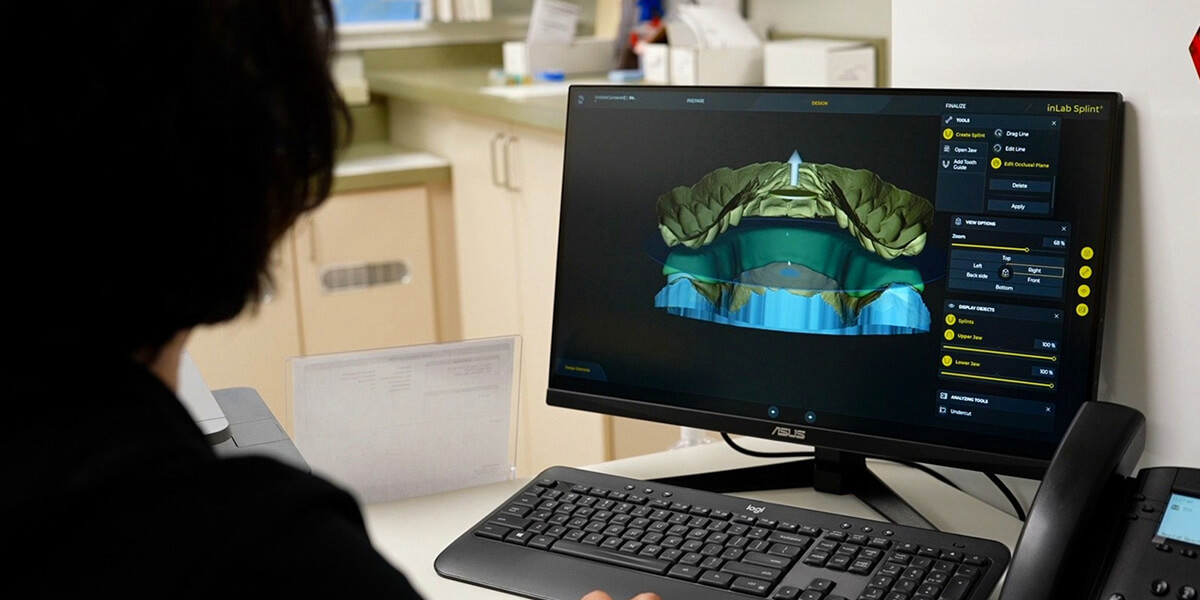TMJ Disorders
The temporomandibular joint (TMJ) connects the jawbone to the skull. TMJ disorders often cause discomfort in the cheek, jaw, or ear areas and can affect normal jaw function. Myofacial pain, or discomfort or pain in the muscles that control jaw function can be exacerbated by clenching or grinding teeth.
Signs and symptoms of TMJ disorders are frequently intensified by stress and can include:
- Headaches
- Soreness in the cheek or jaw area
- Pain in or around the ears
- Facial pain
- Tight jaws
- Popping or clicking sounds when opening mouth
- Locking of the jaw
- Difficulty chewing
Treatment for TMJ disorders is most frequently accomplished through use of a customized mouth guard. Worn at night, it relieves the pain while protecting your teeth from damage and reducing the stress on your jaw.


In order to release the pressure from the temporomandibular joint, a mouth guard must be adjusted to fit perfectly. It should be snug against your teeth without shifting; you should not need to bite down or clench your teeth for it to fit securely.
In our office, we take special care to make sure your mouth guard is specially fitted not only for your teeth, but also the particulars of your bite and how your jaw moves.
An over-the-counter guard, or a guard advertised as "custom" through online vendors, may be fitted to your teeth, but without careful and considered adjustment to your actual bite, they cannot be fitted to how your jaw actually functions. A mouth guard made in in our in-office lab will be customized to both your teeth and your actual bite. At your delivery appointment you will appreciate how much work we put into making sure your guard isn't just something to put between your teeth, but rather is specifically designed to take stress off your teeth, your TMJ joint, and all the muscles in your head and neck.
Before
After
These before and after videos illustrate the difference in the way the jaw aligns prior to and following the adjustments for custom fit. As you can see, the second video (following the personalized adjustments) shows how the teeth easily move across the mouth guard in a manner that takes pressure off the joint.
